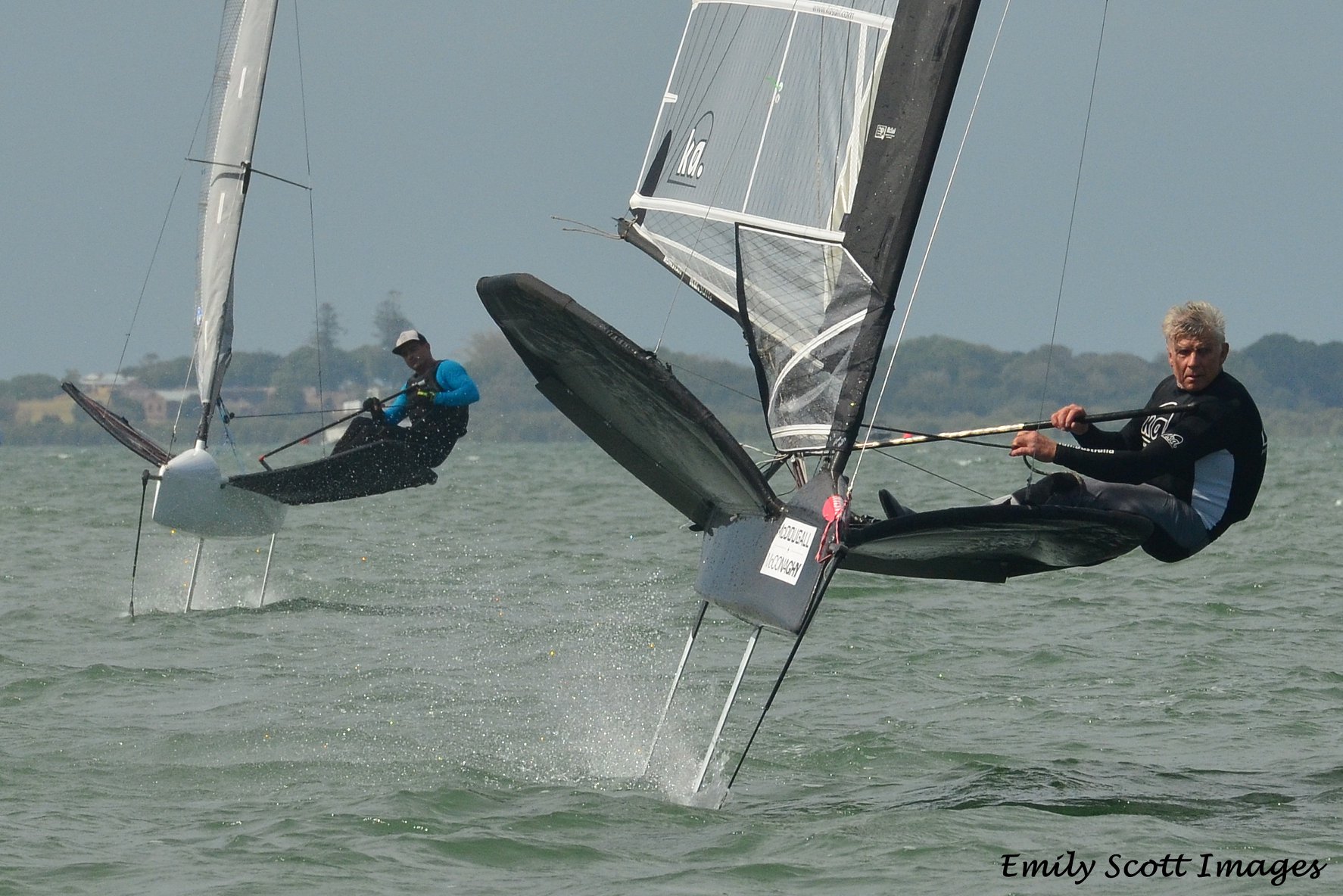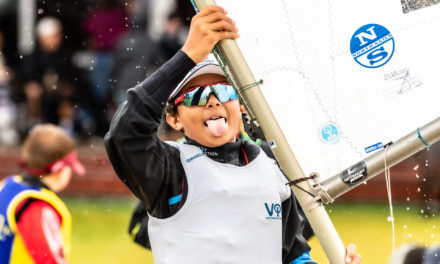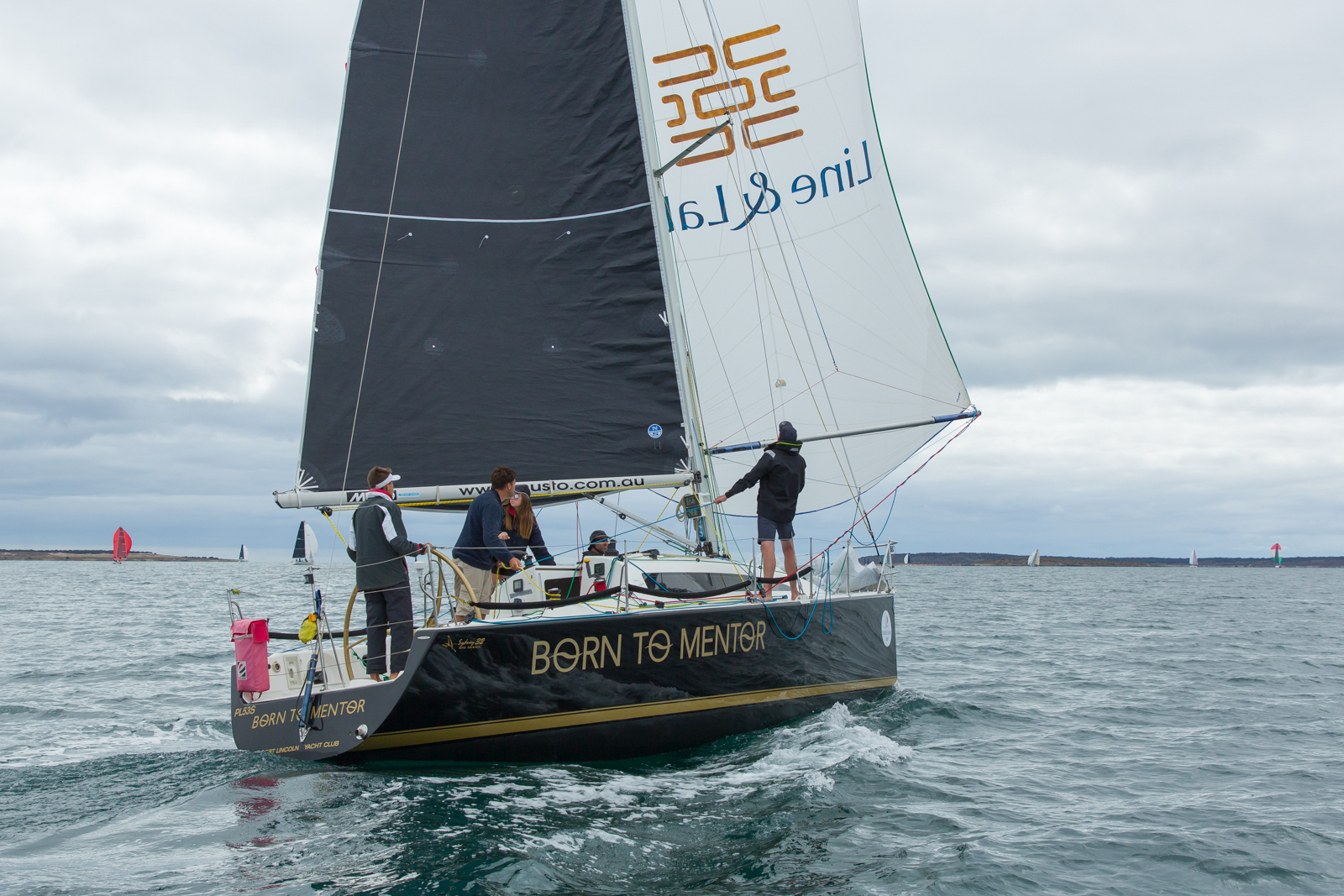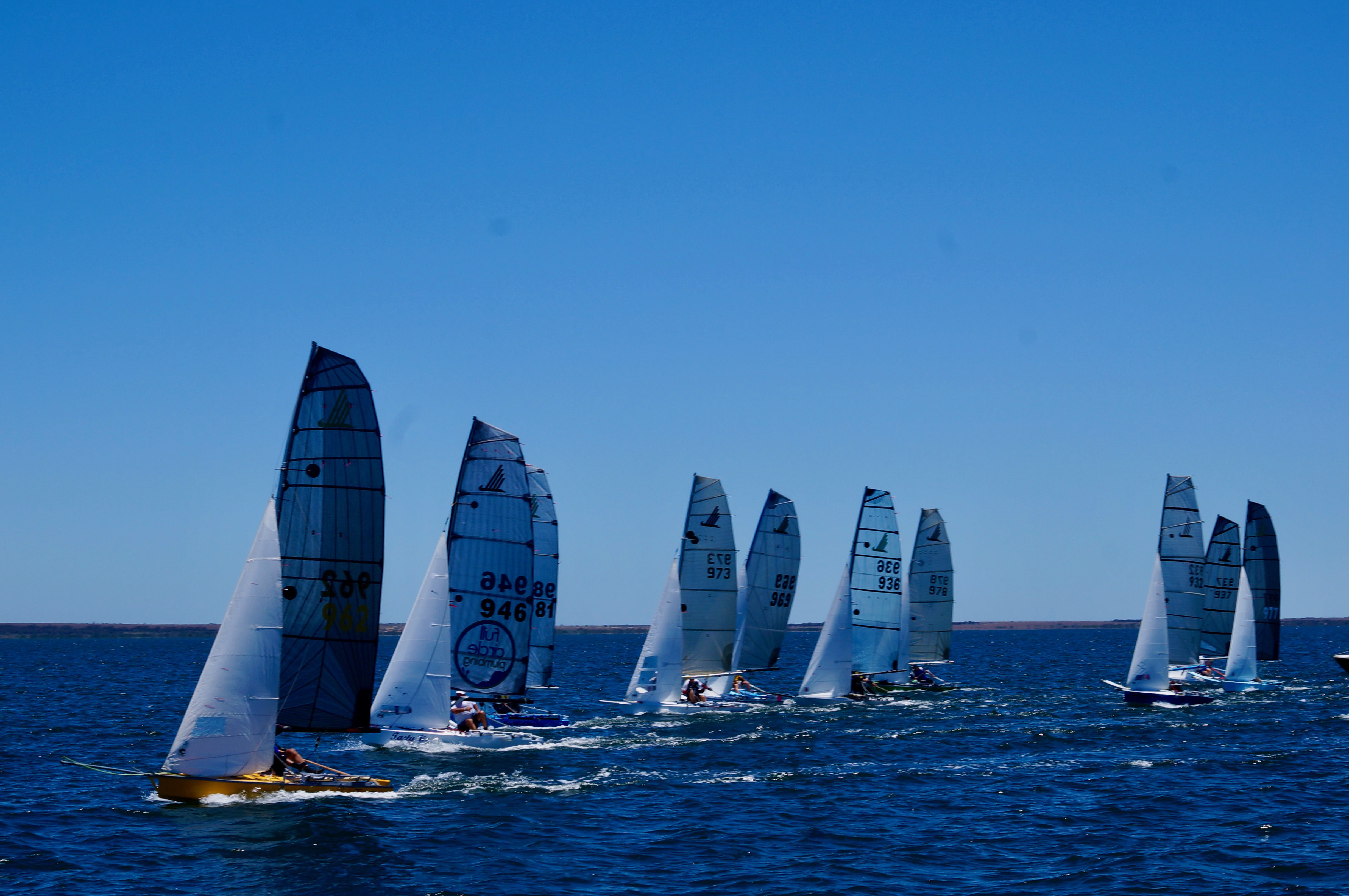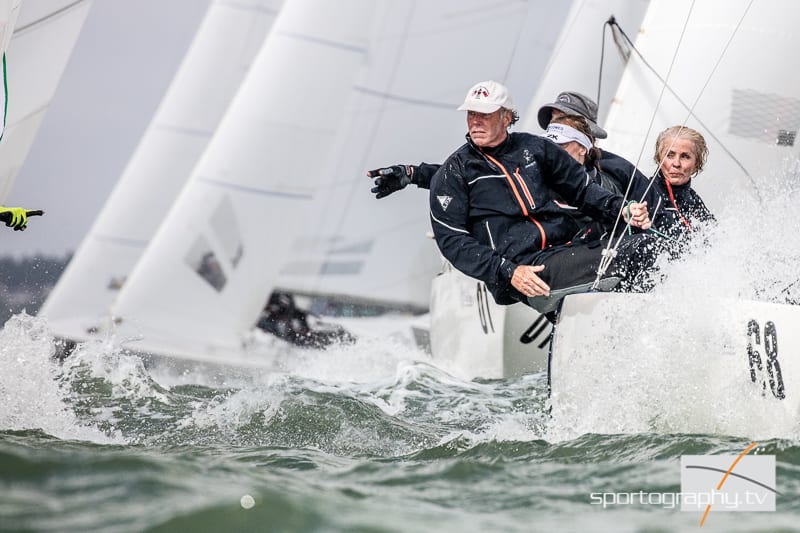It has been an amazing journey for the MACH2, one of the leading brands of the Moth dinghy. In 2008 Australian designer Andrew McDougall sat on a rock after the Weymouth Moth Worlds looking for a game changer – and to his credit, he found one!
During 2008, Amac as he is widely known, was on a different form of sabbatical. He had no commercial ties to the Moth class having left Bladerider after the 2007 Worlds and he was once again designing just for himself. Amac is not a professional or elite sailor, but he was addicted to the efficiency and usability he could create with the MACH2 platform. Years later, this is something the team at MACH2 believe is a key to the success of the product.
“There is no point creating something that is blindingly fast, but unsailable,” says Amac, who kept this philosophy in mind when he set about designing a platform around efficiency, that would allow an elite sailor to get the most out of the boat for longer periods of time, and increased usability for the remaining majority of sailors.

As a result, the MACH2 was born – a production foiler with the latest technology and accessible to anyone who wanted to be at the top end of the Moth fleet. Worldwide fleets have exploded in the last 10 years peaking with the biggest ever Moth fleet at a World Championship – 226 boats on Lake Garda in 2017. The strength for the Moth at the time was it essentially became a box rule based around the MACH2, which consistently held about 90 per cent of the World’s fleets up until recently when more options became available in local markets – it was a class pioneer in that sense.
However now with upwards of eight different suppliers of hulls and components, the class has found itself diluted and has been forced to undertake a rebuilding phase of sorts, with fleet numbers dropping considerably to 53 at the Worlds in Bermuda in 2018, 50 at the European Championships in Sweden in 2018, and most recently with 46 at the European Championships in Portugal a few weeks ago.
The class now heads back down under for the World Championship in December, and Perth Western Australia is set to up the anti with a fleet of more than 120 expected, bolstered by a large influx of new MACH2.5s from around Australia and other parts of the world.
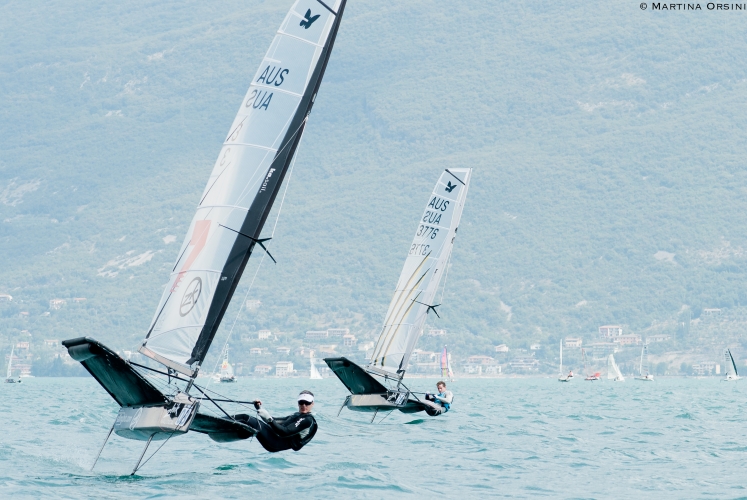
Amac says the re-birth of the class has come from the accessible nature of a production-focused foiler, with the continued focus of MACH2 aimed at providing a fantastic basis for any Moth sailor, or for a new sailor looking to get into the Moth fleet.
As a pioneer of accessibility for this globally-renowned class, Amac has always made sure the development cycle was in full reach for the average sailor, as well as keeping the “tech-heads at the front of the fleet on their toes”.
“We didn’t want to go too radical, all our developments have been staggered in a way so sailors can continue to update their boats and remain at the top of the fleet,” he says. “Our new MACH2.5 is as fast as anything on the market with the upgrades, but someone with an older MACH2 still has the ability to plug and play to get up to speed quickly.”
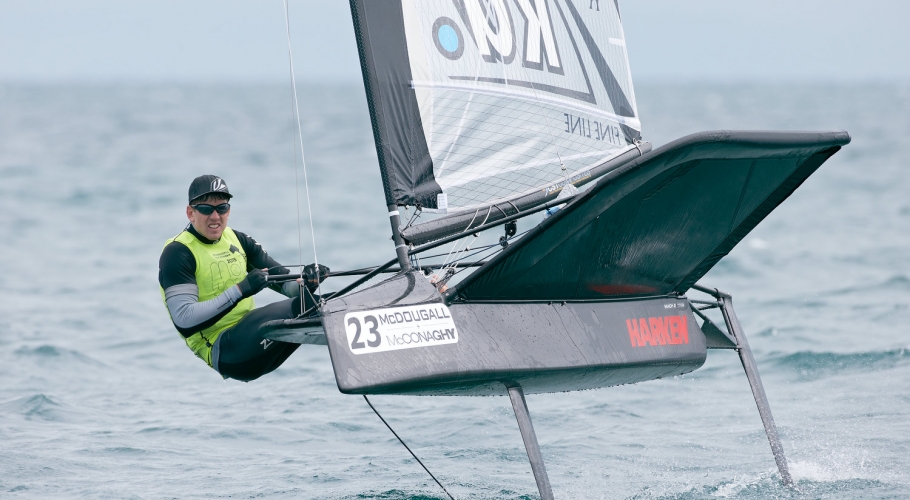
Since the 2017 World Championships at Lake Garda, Amac and his team has undertaken a complete facelift for the MACH2. Pete Burling, fresh off a win at the America’s Cup that year, jumped in a six-year-old prototype boat with prototype rig and foils, and with no training managed to finish second to veteran Paul Goodison, who had effectively been sailing full-time on the Moth for a year prior.
Certainly not to discredit
Goodison, one of the greats of the sport who was undoubtedly the best sailor at
the event and has since gone on to claim his third World Championship, however it
showed the overall potential of the new MACH2 product.
The next 18 months saw Nathan Outteridge win the 2018 Moth Nationals at Wangi
on Lake Macquarie, again on prototype gear, prompting Amac and the MACH2 team
to tweak up the prototype rig and foil and allowing for full production to
commence on the MACH2.4. These upgrades resulted in the new MSH5 Decksweeper
Sail (lower rig) and the 2.41 main horizontal foil, which was designed as an
all-round solution to early foiling and strong top-end speeds.
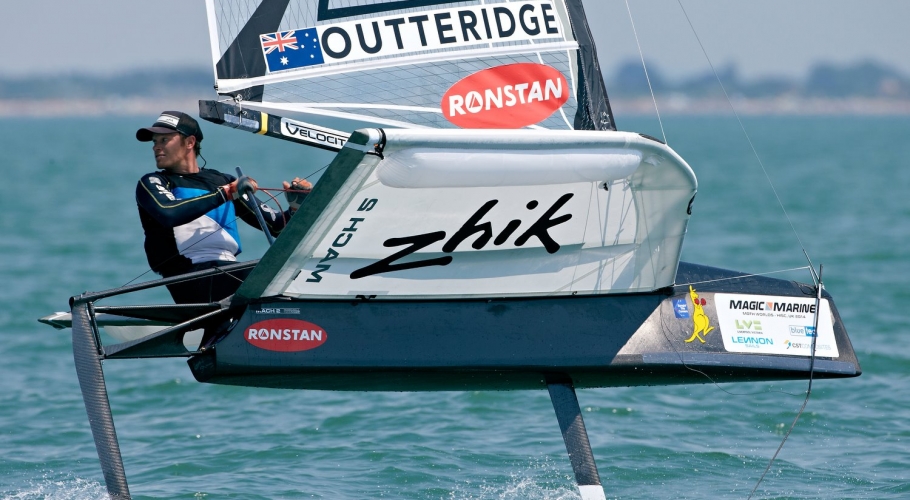
The development then continued late last year when Amac embarked on a new aero kit around the wing bars and tramps, bringing a rigorous multi-year planning stage to fruition that bore the formula he had always wanted to implement. Donning a prototype that combined the MSH5, the 2.41 main foil and 2.5 aero kit for the 2019 Australian Moth Nationals in Brisbane, the 63-year-old made an immediate impact – faster and higher upwind than his younger and much more nimble competitors.
While he lost out on the manoeuvres to the rest of the fleet, the performance advantage he had championed on the refreshed MACH2 enabled him to win four heats and end up third overall, with the only competitor to have more race wins during the event being the eventual winner Josh Mcknight, also using an MSH5 sail.
Amac says what sets the 2.5 Aero kit apart is that it is built around the same concept he developed 10 years ago that set up the strong Moth fleet numbers in the first place – portability. He says having a boat that’s easy to pack into a travel box and ship to anywhere in the world at an affordable price is what created the huge fleets that dominated from 2008 to 2017, unlike other ‘fixed-wing’ Areo kit options.
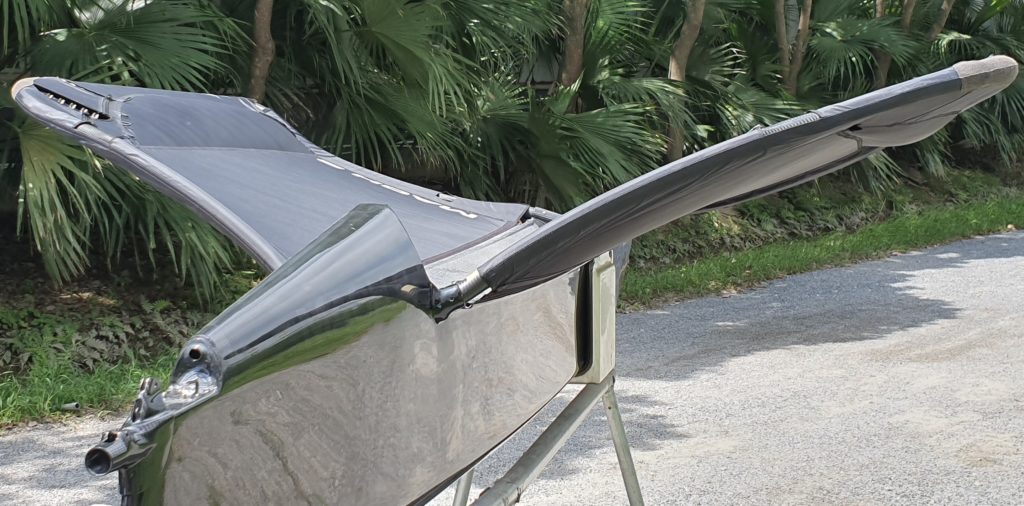
Now, 10 years on from the genesis of these ideas, the revolutionary MACH2.5 is here, and comes available complete with:
- 2.5 Aero Kit (Wingframe)
- 2.41 Main Horizontal Foil
- MSH5 Decksweeper Sail
- Comprehensive build process
- Better and more user-friendly on-board systems.
Amac understands the importance of the Moth as a development class, but continues to stand by his company values that have not changed in the last 10 years – “affordability, accessibility, performance.”
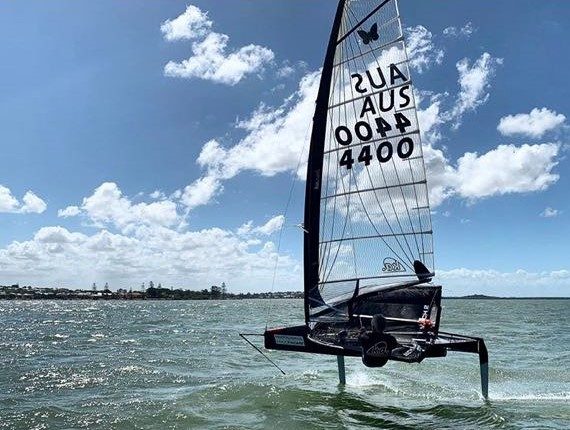
The outcome is a MACH2 product that aims to provide the most affordable package accessible to all sailors, without sacrificing on performance.
The new MACH2.5 will be on display at The Foiling Week at Fraglia Vela Malcesine from 11-14 July. Come have a look at this impressive machine and talk with Amac himself about the 10-year development journey of this innovative product.
Head to the MACH2 Boats website for more info on the new MACH2.5.

